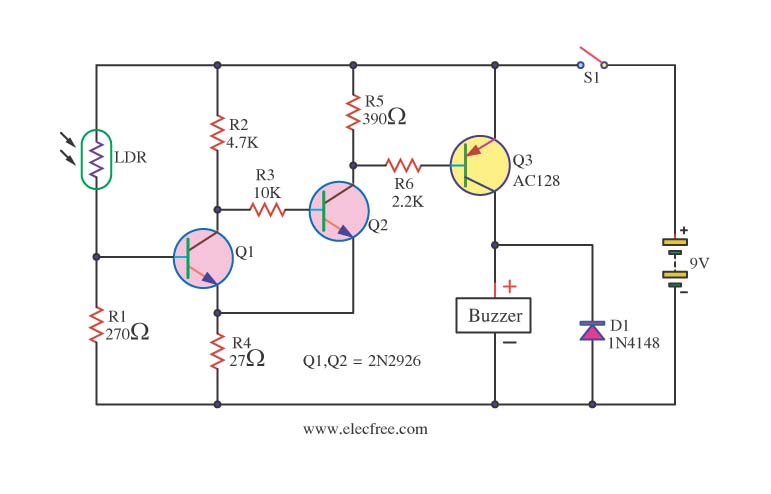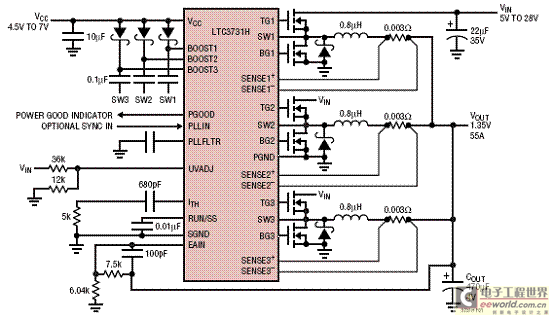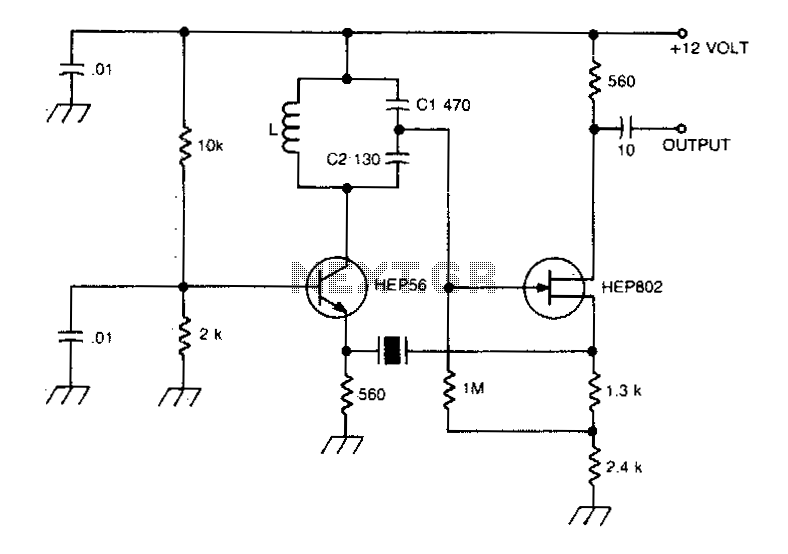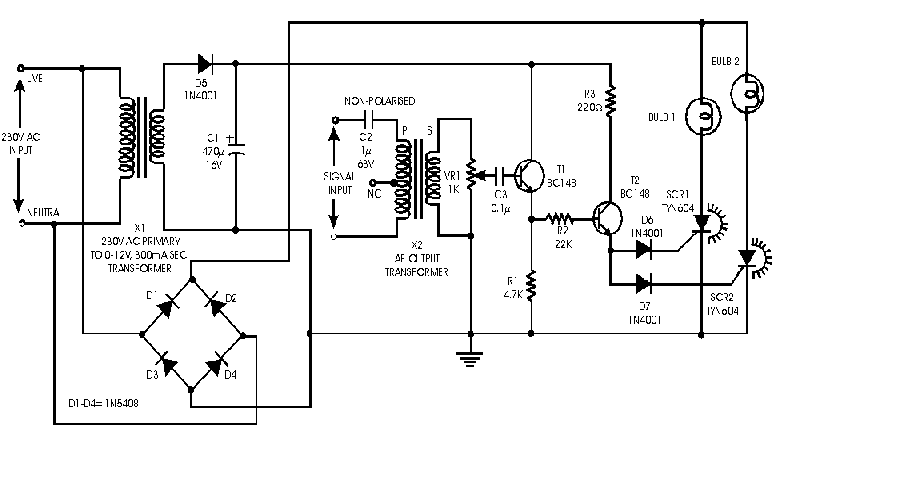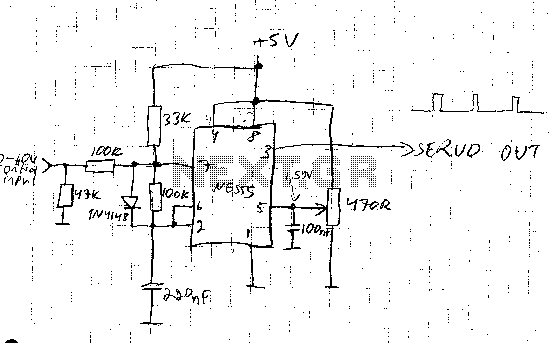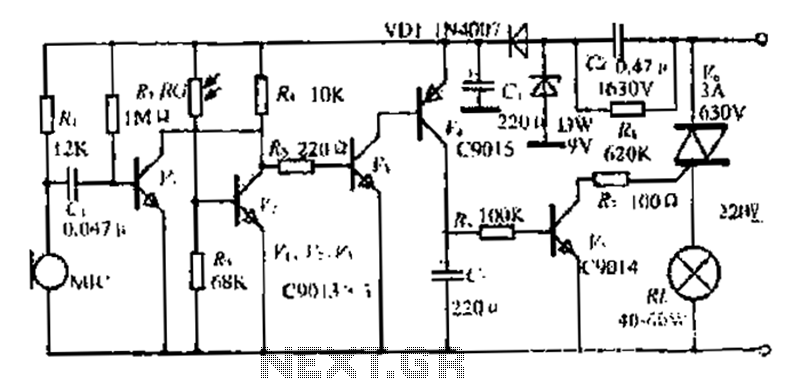
Electronic signs sound and light control
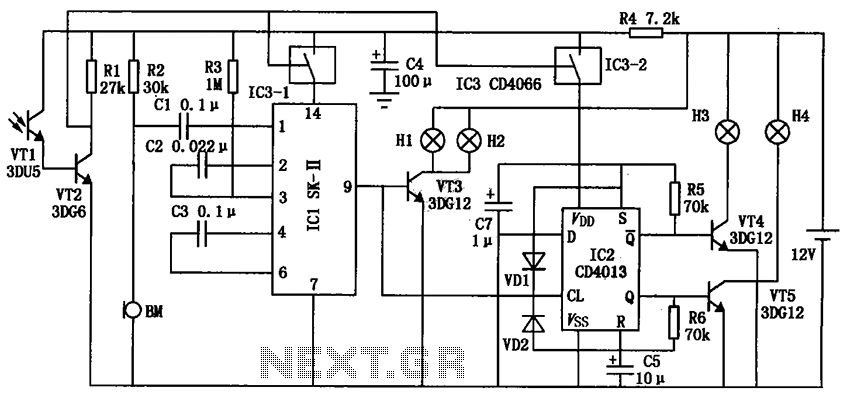
The automatic electronic circuit depicted in the figure consists primarily of a voice circuit, an oscillation circuit, and a driving section for the display circuit.
The automatic electronic circuit integrates several essential components to achieve its functionality. The voice circuit is responsible for processing audio signals, which may involve converting sound waves into electrical signals and vice versa. This component typically includes a microphone for sound input and a speaker for sound output, along with necessary amplification stages to ensure adequate signal levels.
The oscillation circuit generates a specific frequency signal that is crucial for the operation of the entire system. This circuit may utilize various components such as resistors, capacitors, and inductors to create oscillations at the desired frequency. The generated signal can serve multiple purposes, including timing functions or modulation of the voice circuit.
The driving part of the display circuit is responsible for controlling visual indicators, which may include LEDs or LCDs. This section interprets the output from the voice and oscillation circuits and translates it into a format suitable for display. It may consist of driver transistors or integrated circuits that manage the power requirements of the display elements, ensuring they operate efficiently and effectively.
Together, these components form a cohesive system capable of responding to audio inputs and providing visual feedback, making it suitable for various applications in automation and user interface design. The circuit's design emphasizes reliability and responsiveness, ensuring that it meets the demands of modern electronic applications. Automatic electronic circuit shown in Figure signs, it is mainly by voice circuit, an oscillation circuit and a driving part of the display circuit.
The automatic electronic circuit integrates several essential components to achieve its functionality. The voice circuit is responsible for processing audio signals, which may involve converting sound waves into electrical signals and vice versa. This component typically includes a microphone for sound input and a speaker for sound output, along with necessary amplification stages to ensure adequate signal levels.
The oscillation circuit generates a specific frequency signal that is crucial for the operation of the entire system. This circuit may utilize various components such as resistors, capacitors, and inductors to create oscillations at the desired frequency. The generated signal can serve multiple purposes, including timing functions or modulation of the voice circuit.
The driving part of the display circuit is responsible for controlling visual indicators, which may include LEDs or LCDs. This section interprets the output from the voice and oscillation circuits and translates it into a format suitable for display. It may consist of driver transistors or integrated circuits that manage the power requirements of the display elements, ensuring they operate efficiently and effectively.
Together, these components form a cohesive system capable of responding to audio inputs and providing visual feedback, making it suitable for various applications in automation and user interface design. The circuit's design emphasizes reliability and responsiveness, ensuring that it meets the demands of modern electronic applications. Automatic electronic circuit shown in Figure signs, it is mainly by voice circuit, an oscillation circuit and a driving part of the display circuit.
